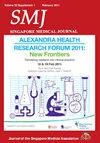股骨颈系统在股骨颈骨折中作为插管加压螺钉和动态髋螺钉的安全替代品:早期比较研究
IF 1.9
4区 医学
Q2 MEDICINE, GENERAL & INTERNAL
引用次数: 0
摘要
股骨颈系统(FNS)是股骨颈骨折中套管加压螺钉(CCS)和动态髋螺钉(DHS)的安全替代方案。 2016年4月至2020年4月期间,一项双中心回顾性队列研究对使用FNS、DHS或CCS进行闭合复位和内固定治疗的股骨颈骨折(AO 31-B型)进行了研究。排除标准如下:患者年龄小于16岁;慢性骨折超过7天;病理性骨折;骨折扩展至转子间区或同侧股骨颈和股骨颈轴骨折;开放性骨折。共确定了 85 名患者:FNS组(28人)、DHS组(29人)和CCS组(28人)。 与 DHS 组相比,FNS 组和 CCS 组的 Garden 和 Pauwels 分级较低(P 均<0.001)。在术后骨科并发症方面,FNS 组和 CCS 组具有可比性(10.7% [n = 3] vs. 3.6% [n = 1],调整后 P = 0.321)。DHS 组的术后骨科并发症多于 FNS 组,但差异无统计学意义(27.6% [n = 8] vs. 10.7% [n = 3],调整后 P = 0.321)。三组之间的放射学结合中位时间或结合时股骨颈缩短中位数无明显差异(P均>0.05)。 新型 DePuy Synthes FNS 是 CCS 的安全替代方案,对于移位较少且较稳定的股骨颈骨折,其并发症发生率与 CCS 相当。对于少数高能量股骨颈骨折病例,FNS似乎也是DHS固定股骨颈骨折的安全替代方案。本文章由计算机程序翻译,如有差异,请以英文原文为准。
Femoral neck system as a safe alternative to cannulated compression screw and dynamic hip screw in femoral neck fractures: an early comparative study
The femoral neck system (FNS) is a safe alternative to cannulated compression screw (CCS) and dynamic hip screw (DHS) in femoral neck fractures.
A dual-centre retrospective cohort study was performed on femoral neck fractures (AO type 31-B) treated with closed reduction and internal fixation using FNS, DHS or CCS between April 2016 and April 2020. Exclusion criteria were as follows: patients aged below 16 years; chronic fractures beyond 7 days; pathological fractures; fracture extension to the intertrochanteric region or ipsilateral neck and shaft fractures; and open fractures. A total of 85 patients were identified: FNS (n = 28), DHS (n = 29) and CCS (n = 28).
The FNS and CCS groups had a lower Garden and Pauwels classification compared to the DHS group (both P < 0.001). Both FNS and CCS groups were comparable in postoperative orthopaedic complications (10.7% [n = 3] vs. 3.6% [n = 1], adjusted P = 0.321). The DHS group had more postoperative orthopaedic complications than the FNS group, but this was not statistically significant (27.6% [n = 8] vs. 10.7% [n = 3], adjusted P = 0.321). There were no significant differences in median time to radiological union or median femoral neck shortening at union (both P > 0.05) among the three groups.
The new DePuy Synthes FNS is a safe alternative to CCS with comparable complication rates for femoral neck fractures that are less displaced and more stable. The FNS also appears to be a safe alternative to DHS in the fixation of femoral neck fractures for the few cases of high-energy femoral neck fractures.
求助全文
通过发布文献求助,成功后即可免费获取论文全文。
去求助
来源期刊

Singapore medical journal
MEDICINE, GENERAL & INTERNAL-
CiteScore
3.40
自引率
3.70%
发文量
149
审稿时长
3-6 weeks
期刊介绍:
The Singapore Medical Journal (SMJ) is the monthly publication of Singapore Medical Association (SMA). The Journal aims to advance medical practice and clinical research by publishing high-quality articles that add to the clinical knowledge of physicians in Singapore and worldwide.
SMJ is a general medical journal that focuses on all aspects of human health. The Journal publishes commissioned reviews, commentaries and editorials, original research, a small number of outstanding case reports, continuing medical education articles (ECG Series, Clinics in Diagnostic Imaging, Pictorial Essays, Practice Integration & Life-long Learning [PILL] Series), and short communications in the form of letters to the editor.
 求助内容:
求助内容: 应助结果提醒方式:
应助结果提醒方式:


